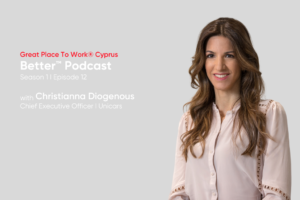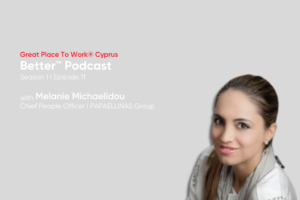

Accenture’s North America Inclusion & Diversity lead shares practical tips for organizations looking to widen their talent pools.
Organizations have three levers they can pull to find the talented and diverse workforce they need.
Companies can widen their talent searches and bring more candidates into their pipeline. They can use training and development to create the specialized talent they need. They can also nurture talent within their organization, offering internal candidates the opportunity to upskill and progress to new roles.
Yolanda Friend, managing director and North America Inclusion & Diversity lead at Accenture, shared how Accenture defines and promotes belonging at our 2022 For All™ Summit. She offered ways every organization can build a better talent pipeline to improve diversity and belonging at any workplace.
1. Increase the scope of your talent search
To widen the talent pool at your workplace, diversify your pipeline.
“When we began focusing our inclusion and diversity efforts on closing talent gaps, we knew the answer lay in widening our horizons in how we sought out and retained our talent pool,” said Friend.
In 2016, Accenture became the first professional services firm to voluntarily publish its comprehensive workforce demographics, including by gender, ethnicity, persons with disabilities, and veterans in the U.S. — and since then, has added LGBTQ data.
Assembling an inclusive slate of candidates before interviews is one step towards eliminating bias in the search for talent.
“We’ve also removed bachelor’s degree requirements from about half of our entry-level roles in the United States,” Friend says. “That’s given us access to a much broader and more diverse talent pool.”
Representation matters during the recruiting process as well.
“It’s important to have diversity on your hiring team,” Friend said. “People want to see themselves reflected in our organization. When a job applicant doesn’t see diversity represented in the hiring process, it raises doubts about the commitment of the organization to create an open and welcoming environment.”
To mitigate systemic perception and process issues, Accenture ensures interview panels are diverse and balanced and that hiring power does not rest with a single individual.
“We use multiple interviewers,” shared Friend. “It has to be more than one person making the final call.”
[Hear from more inspiring leaders at our next For All Summit]
2. Create the talent you need
Access to continuous learning and professional development opportunities are an important way organizations can upskill current talent at the company and unlock the full potential of their people.
Organizations can also help develop talent with career mapping, internal job mobility, and tools to help match internal candidates to development opportunities.
If an employee isn’t finding success in their role, Friend recommends looking at three factors:
- Are they in the right role?
- Do they have the necessary skills?
- Do they have the right sponsor?
“If people have gaps in their performance — clearly one of those three areas is not working, and organizations should help their people discover their best opportunities and expand their skill sets,” she said.
At Accenture, mentorship and sponsorship play a crucial role in the career progressions of internal candidates into future leaders. “We expect our leaders to sponsor and mentor our people,” said Friend.
3. Unlock the full potential of the talent you have.
A commitment to diversity and inclusion also means a company culture that cares about its people.
“We may choose the talent who join our company,” shared Friend. “But it’s critical to recognize that it’s our people who decide every single day whether to stay.”
Accenture provides its people access to tools and programs like Thrive Global, a behavior-change platform offering science-based solutions to lower stress and enhance well-being and productivity.
Great Place To Work® research shows that companies who invest in their employees are rewarded with higher productivity, performance, and profits.
“Small behavior changes can really move the needle and have a big outcome over time,” Friend says.
Measuring results
To see the full benefits of a diversity and inclusion strategy, leaders must be accountable for their commitments. Outcomes must be measured and tied to business goals.
“At Accenture, we approach inclusion and diversity with the same discipline and rigor as any other business priority,” said Friend. “We set goals, share them publicly, collect data to continuously improve and hold our leaders accountable. We also expect our people to own the equality agenda — to make it part of their jobs — every decision, every day — and to speak up and to act. Everyone from the top of our board to the new joiner is responsible for a work environment where our people can be the same person both inside and outside of work.”
Subscribe
Learn how to create an award-winning company culture. Subscribe to the Great Place To Work company culture newsletter and join 100,000+ other leaders learning how to create a great workplace.

Ted Kitterman is a content manager for Great Place to Work®. Ted has experience covering the workplace, business communications, public relations, internal communications, work culture, employee well-being, brand purpose and more. His work shines a light on the unparalleled data and insights offered by Great Place to Work’s decades of research, helping the company share its vision of a great place to work For All™.
Latest Articles

Diversity in the Workplace: Definition, DEI, Types, and Surveys in Cyprus

What is Employee Engagement? Definition, Benefits, and Surveys in Cyprus

Workplace Culture: Definition, Types, and Cultural Diversity in Cyprus

Want a Certified Workplace in Cyprus? Learn How Employee Surveys Improve Engagement and Culture

Episode Twelve wtih Christianna Diogenous, Chief Executive Officer at Unicars

